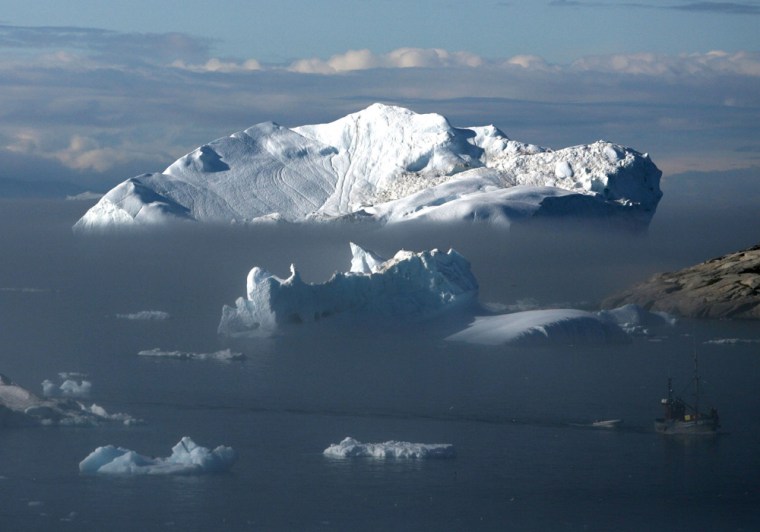The amount of melt on Greenland's ice sheet last summer broke the previous measured record by 10 percent, according to new data analyzed by researchers at Colorado University.
The 2007 melt was the largest ever recorded since satellite measurements began in 1979, researcher Konrad Steffen told colleagues at a conference of the American Geophysical Union this week.
"The amount of ice lost by Greenland over the last year is the equivalent of two times all the ice in the Alps, or a layer of water more than one-half mile deep covering Washington, D.C.," he said in a statement released in conjunction with the new study.
The melting has increased by about 30 percent for west Greenland from 1979 to 2006, with record melt years in 1987, 1991, 1998, 2002, 2005 and 2007, said Steffen, director of the Cooperative Institute for Research in Environmental Sciences at Colorado University.
Air temps increased as well
He added that air temperatures on the Greenland ice sheet have increased by about 7 degrees Fahrenheit since 1991.
His team used data from military and weather satellites to chart the melt. It also maintains 22 monitoring stations on the ice sheet that transmit hourly data via satellites to Colorado University at Boulder.
Steffen noted that while Greenland has been thickening at higher elevations due to more snow, the gain is more than offset by accelerating loss where glaciers meet the sea.
One of those, he said, is the Jacobshavn Glacier, which drains 8 percent of the ice sheet. The drainage rate has sped up nearly twofold in the last decade, he said.
"The more lubrication there is under the ice, the faster that ice moves to the coast," said Steffen. "Those glaciers with floating ice 'tongues' also will increase in iceberg production."
Sea level predictions underestimated?
Steffen said recent research on ice dynamics "will likely show" that U.N. predictions "underestimated sea-level projections for the end of the 21st century."
Of particular concern is an increase in shafts known as moulins, which drain melt water from surface ponds down to bedrock.
"These melt-water drains seem to allow the ice sheet to respond more rapidly than expected to temperature spikes at the beginning of the annual warm season," Steffen said. "In recent years the melting has begun earlier than normal."
"We know the number of moulins is increasing," he added. "The bigger question is how much water is reaching the bed of the ice sheet, and how quickly it gets there."
The current contribution of Greenland ice melt to global sea levels is about .02 inches a year, Steffen's institute noted, but the potential impact is enormous. About a quarter the size of the United States, Greenland has about one-twentieth of the world's ice — the equivalent of about 21 feet of global sea rise were it to completely melt into the sea.
That process could take centuries to complete, but once started would be difficult to reverse.
